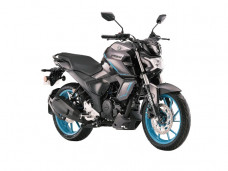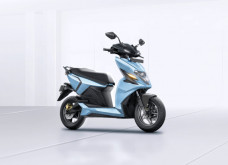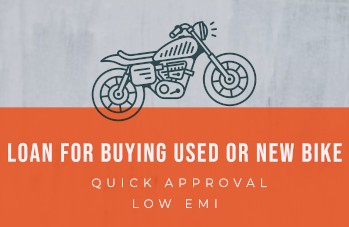Solid wheels: Both the rim and the spokes will be cast (in aluminum) as one single unit.
Spoke wheels: The motorcycle rims are laced with the spoke.

In the recent times motorcycle makers are going in for other combination of elements. The simple logic to going in for the rims made from such alloys is that they are lighter than aluminum and saves on weight.
Alloy wheels are the in thing in the motorcycle world. They let your bike ooze some kind of a style statement while adding a distinctive look to it.
There is a wide range of alloy wheels on the market these days. They are for those who'd want to add that rare as well as lighter look to their bikes. Besides being glamorous, they increase suspension as well as handling to enhance overall performance of the bike.
Majority of alloy wheels available as accessories are made of aluminum and the reason for this is that it adds to overall strength while being light in weight. There are other elements used in the making of alloy wheels lately which include magnesium, copper, carbon, silicon etc. The elements are mixed in some proportions to give strength and weight to the wheel and the automobile.
Advantages of alloy wheels over steel spokes:
Enhances look of the bike
Lighter therefore gives more fuel economy
Suitable for all weathers
They are rust free which implies no need for maintenance
Disadvantages:
Repair of alloy wheels not easy, often times asking for replacement of entire wheel
Alloy wheels are susceptible for distortions and breakage when you ride on bumpy roads.
How are alloy wheels made?
Alloy wheels are not cast and they are not forged either. Their structure is crystalline and it imparts strength to alloy. But the bad part here: in case the metal gets distorted, it won't be possible to bring it to its original shape. Should a force be applied it may break or get damaged further.

The alloys used in wheel making are strong nonetheless soft. So they get damaged pretty much easily should they get in contact with large gravel or stones. The alloy wheels which we see on the market come with a coat of paint or lacquer to offer some protection to the metal. And we know well that Aluminum is a no-rust metal although pure aluminum gets oxidized when left to normal atmosphere and that oxidized layer appears negligibly thin and transparent.
Repairing the alloy wheels is a brainer and can only be attempted if you've gotten the right tools and the equipments handy. It's best to approach a workshop should you like to restore distorted alloy wheel/s to original position.
Sandblasting method and using fillers are some methods of correcting large gaps or cracks.













